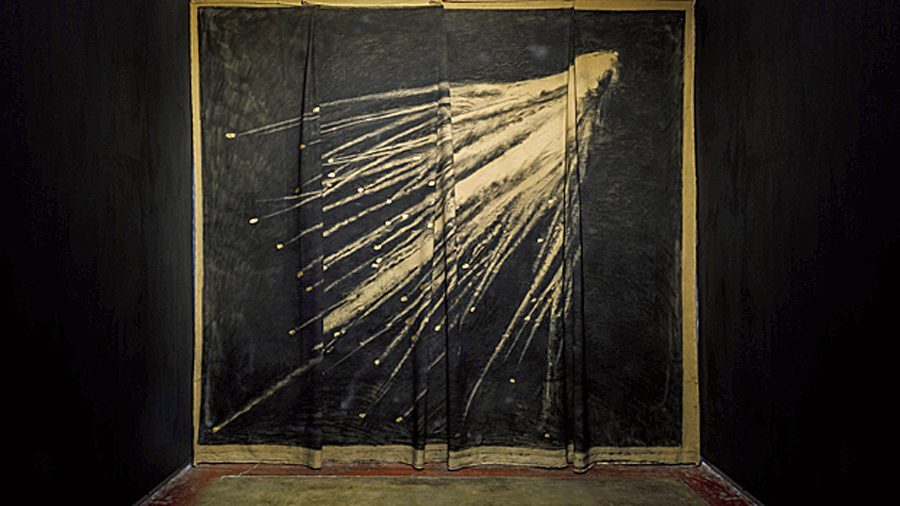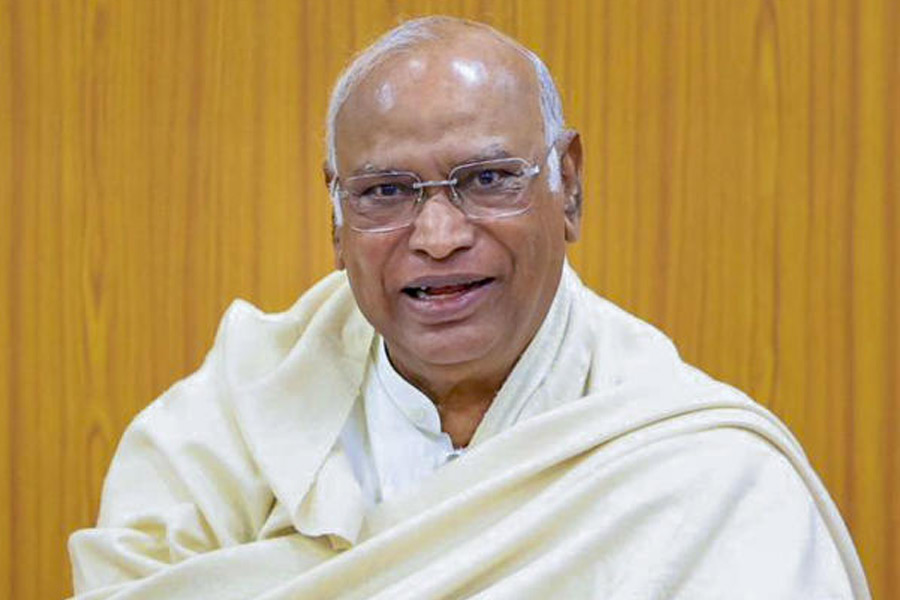In its first on-site event in months, Experimenter (Ballygunge Place) brought together four shows in a single presentation titled Four Positions. The late Krishna Reddy (1925-2018), an icon of Indian modernism as it charted the heady waters of the European avant-garde, shared the gallery with three contemporary artists. Their dialogue with space offered a fortuitous link.
Reddy’s early works from the 1940s and 1950s track his ports of call: Visva-Bharati and Nandalal Bose in his woodcut prints and, in his etching and aquatint series, European masters such as Matisse and Modigliani, Braque and Picasso, the latter imprinted quite deeply in his bristly lines and sentient bands, in incipient forms and the vocabulary of the collage in an impromptu narrative of dissonance in Discerning.
But a remarkable etching dated 1949, Landscape and Figure, with a vista that tunnels through space as it were, presages the way the dimension of Time seems to be calibrated in vertiginous depths in his well-known Apu series. This kind of visual correlative to a philosophic reach into the Time-Space continuum is seen in works like Germination and Dawn Worship, which articulate a sense of the finite emerging from a tandava of infinity. Of matter spewing from great vibrations of energy that set in motion endless cycles of explosion and coalesce into form and being, blurring the line between the inanimate and the living, challenging the believer’s ingrained anthropocentricism.
It seems Julien Segard plunges into his own vision of a cosmic tandava in his charcoal and gold foil installation, Dark was the Night (picture). A black drape covers an entire wall, falling in vertical folds in a room whose walls are painted black. The darkness is impalpably material, much like light, intangible yet overbearing, radiating sensations of condensed energy with continual shifts within. Ripping through the night is a blinding flare of gold, exploding like a star burst, shooting beams and debris across a coal-black space, hinting at a conjunction of contraries: a malevolent apocalypse and a fiery genesis, enigmatic in their inseparability.
By contrast, Ayesha Sultana shrinks the perspective in her untitled gouache series to imperceptibly agile little patterns that are as microscopic in time, scale and movement as a Pulse — the title of this section — but they embed in their tensile lines and brittle, quaking dashes, in their tiny, skipping cubes and punctuations of space a vital code: a kind of undecipherable Richter message. Of the heart, perhaps, for some seem to recall cardiogram charts; of the earth, for some resemble seismic records; of voice tones, for some quiver like sonic signals; of telecommunications, for some vaguely bring to mind the Morse code. A teasing range of lines and marks that anchor space and slip through its grip in evasive trepidations.
Sultana is intimately conversant with the versatility of paper. An untitled series using pencil, pigment and ink and another that exploits the plasticity of tissue paper conjured up withered, wounded topographies, bleeding red, drying ink in Miasms: perhaps an environmental concern.
Space in Rathin Barman takes the shape of architecture. But the period houses that he references, their receding dimensions and stilled emptiness — as in the 72-panel, 16 ft by 16 ft wall sculpture in concrete inlaid with brass and detailed in pastel seen here — is a loaded signifier, trailing connotations of identity, memory, the chastening lessons of history. Restructured Living Space appears indestructible in its solidity, but also doomed, like an evanescent mirage. Untitled III and Ambiguous Living Spaces are as captivating. Their interface between blocks and voids, depth and flatness, the tactile and the tenuous is both austere and inviting at once.











